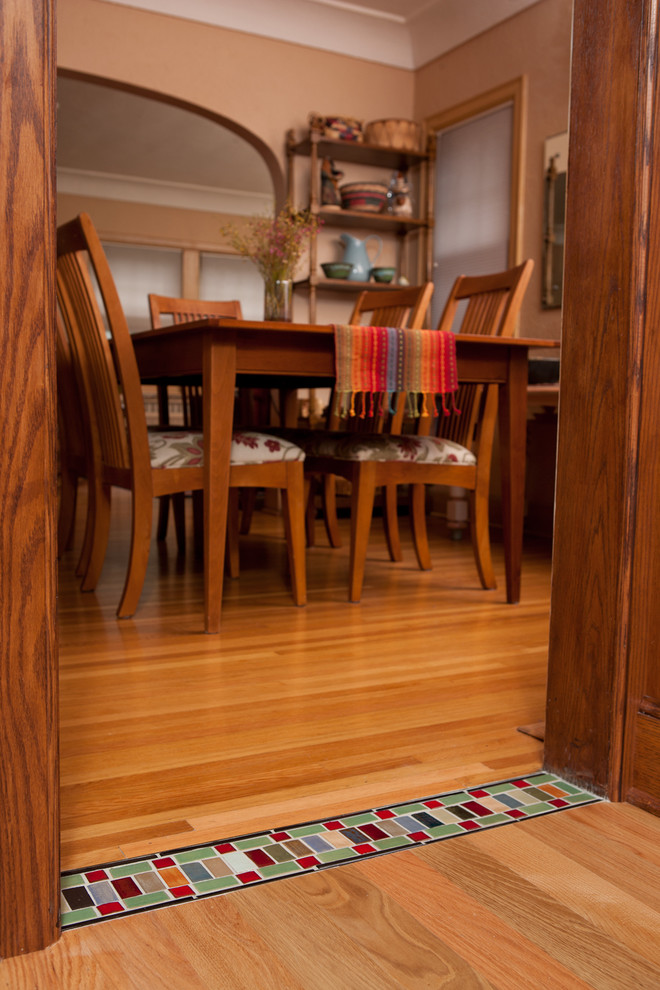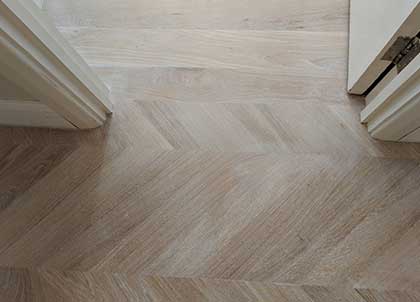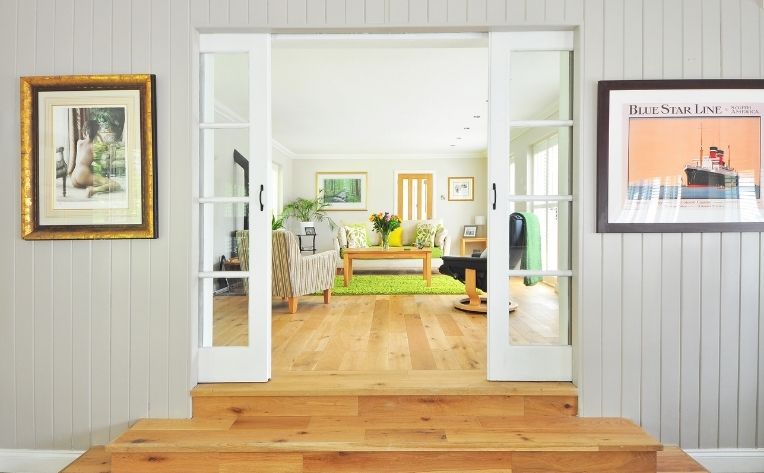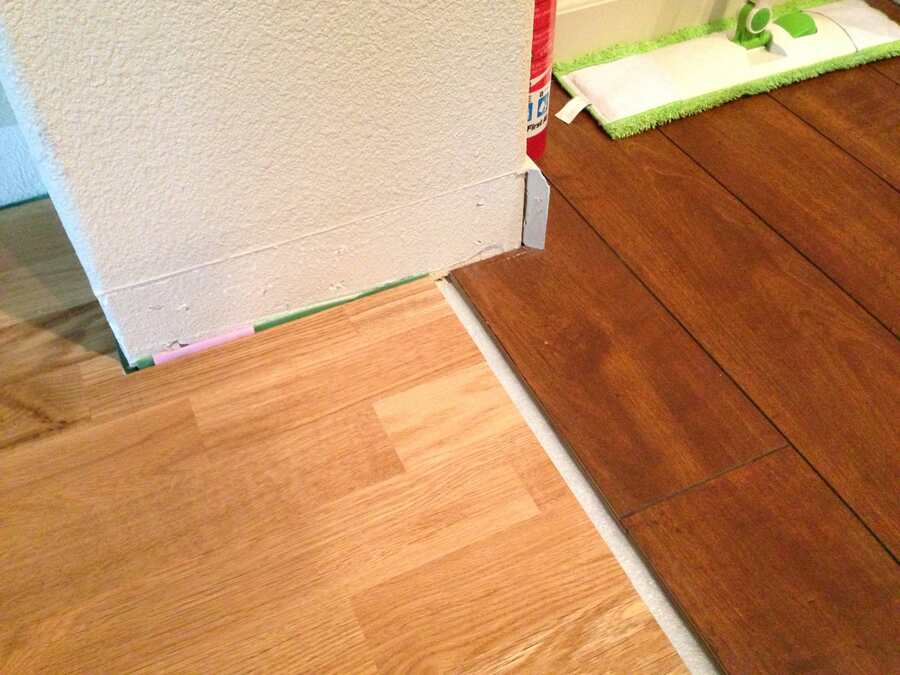Imagine walking into a room where two different wood floors meet seamlessly, creating a stunning visual effect. This is the kind of transformation that can elevate your home’s style and make it a talking point among guests.
But achieving this look can be a bit tricky. How do you transition between two different wood floors without making it look awkward or mismatched? You might have a new renovation project in mind, or perhaps you’re dealing with existing floors that need a little love.
Whatever your reason, mastering this transition can make a world of difference. The good news is, it’s easier than you think once you know the secrets to getting it right. You’ll discover practical tips and smart techniques that can help you create a harmonious blend between different wood tones and textures. So, if you’re ready to turn your flooring dilemma into a design triumph, read on. You’ll soon find yourself equipped with the knowledge and confidence to tackle this challenge head-on, ensuring your home reflects your personal style in the most elegant way possible.

Choosing Compatible Wood Types
Finding the right wood types is important for a smooth transition. Choose woods that have similar colors and grains. This ensures a natural flow between rooms. Oak and maple are popular choices. They blend well with many styles. Avoid combining woods with very different textures. This can look unbalanced.
Consider the finish of the wood. A glossy floor may clash with a matte one. Matching finishes create harmony. You can also use a transition strip. This separates the two floors neatly. It adds a professional touch. Simple choices can make a big difference.

Color Coordination Strategies
Choose colors that look good together. Light and dark shades can mix well. They make spaces look nice. Use a rug to help colors meet. A rug can add warmth and style.
Natural tones often fit in many rooms. They are easy to match. Look at light in each room. It can change how colors appear.
Match floors with furniture. It makes rooms feel complete. Add plants for a natural touch. They bring life to spaces.
Use simple pieces to tie rooms together. Neutral colors work best. They keep the focus on the floors.
Selecting Transition Strips
Transition strips help connect different wood floors smoothly. There are several types of strips. Each type suits different needs. T-molding is common. It fits floors of the same height. Reducer strips handle different floor heights. They create a gentle slope. End moldings finish floors near walls. They give a neat look.
Transition strips come in various materials. Wood strips match floors well. They offer a natural look. Metal strips are durable. They work in high-traffic areas. Vinyl strips are flexible. They are easy to install. Each material has unique benefits. Choose based on your needs.

Installation Techniques
Seamlessly transitioning between two different wood floors involves choosing the right transition strip. Consider color and texture to match your existing floors. Proper alignment ensures a smooth and safe transition, enhancing the overall look of your space.
Preparing The Surface
Start by cleaning the floor area. Remove all dust and debris. The surface must be smooth and level. Use a sander if needed. Check for any bumps or dips. Fill gaps with wood filler. Let it dry completely. Measure the area carefully. Ensure you have enough transition strips. These strips will help in joining both floors.
Securing The Transition
Place the transition strip between the two floors. Make sure it fits perfectly. Adjust if necessary. Use adhesive or screws to secure it. Ensure it’s tight and stable. Press down firmly. Check the alignment frequently. The strip should not move or wobble. Double-check the edges for gaps. Fill any gaps with sealant. Let everything set for a few hours. This ensures a smooth and secure transition.
Maintaining Seamless Transitions
Keep floors looking fresh with regular cleaning. Use a soft broom for dust. Vacuum weekly to remove dirt. Mop with warm water for shine. Avoid harsh chemicals. They can damage wood. Dry floors quickly after mopping. This stops water damage. Clean spills right away. They can stain the wood.
Wood floors can get scratches. Use a repair kit for minor scratches. Sand deep scratches gently. Apply wood stain to match color. Replace broken planks carefully. Check for loose boards. Nail them down tight. Wax floors for extra protection. It gives a shiny finish. Polish them to keep looking new. Regular care makes floors last long.
Avoiding Common Mistakes
Mismatched heights can cause people to trip. Always check both floors’ levels. Use a simple tool called a leveler. It helps find any uneven spots. When one floor is taller, use a transition strip. This strip makes a smooth slope. It’s easy to walk on. It also looks nice.
Clashing wood patterns can look bad. Choose colors that match. Dark and light woods may clash. Try to keep a similar style. You can use a rug to help blend. It covers the spot where patterns meet. Rugs come in many colors. They can make a room look cozy.
Consulting Professionals
Wood floors can be tricky. Sometimes, they do not match perfectly. Experts know how to make them fit nicely. They use special tools and skills. It’s smart to ask them for help. This saves time and money. Mistakes can be costly. Professionals can prevent these. They see problems we may not. Their advice is valuable and helpful.
Before starting, ask some questions. What experience do they have? How will they match the floors? What materials will they use? Do they have good reviews? Make sure to ask about costs. Also, ask how long it will take. Knowing these answers is important. It helps you make good choices. Always choose someone you trust. This keeps your home safe and beautiful.
Frequently Asked Questions
How Do You Transition Between Wood Floors?
To transition between wood floors, use transition strips. Choose a strip that matches both floor colors. Measure the gap between floors and cut the strip to fit. Secure it in place using adhesive or screws for a seamless look.
What Are The Types Of Floor Transitions?
Common transition types include T-molding, reducer strips, and threshold bars. T-molding is ideal for similar height floors. Reducer strips work for different height floors. Threshold bars are useful for doorways and uneven surfaces. Choose the best one for your specific flooring needs.
Can Different Wood Floors Be Used In One Space?
Yes, different wood floors can be used in one space. Ensure a smooth transition using strips. Select complementary wood tones for a cohesive look. Consistent grain and finish help maintain harmony. This approach adds visual interest without overwhelming the design.
Why Is Floor Transition Important?
Floor transition is important for aesthetic and functional reasons. It provides a seamless flow between rooms and prevents tripping hazards. Proper transitions enhance the overall design of your home. They also accommodate expansion and contraction of wood, ensuring longevity.
Conclusion
Transitioning between wood floors can enhance your home’s aesthetic. It’s about finding harmony. You need to consider color and texture. Ensure the transition complements your space. Choose materials that blend seamlessly. Proper installation is key for durability. Don’t forget to maintain your floors.
Regular care keeps them looking new. Experiment with different styles. It adds uniqueness to your design. Consult professionals for best results. Their expertise helps in avoiding mistakes. Remember, your floors tell a story. Make it a beautiful one. With the right approach, you achieve a pleasing, cohesive look.
That’s what makes a home inviting.




